Hose pumps rollers iglidur A180 vs. POM-C
Ulf Hottung | 17. April 2020
Hose and peristaltic pumps are widely used in medical and laboratory equipment. Liquid substances of various kinds, e.g. reagents or even blood in the dialysis machine, are transported with them.

Design of a peristaltic pump
To make this possible, star-shaped or cylindrical rotary bodies are normally used, which are turned in the conveying direction by “pinch points” or pressure rollers, each displacing a volume before it defined by the distance between the rollers and the inner diameter of the hose.
A delivery rate “flow” setting is usually made by the speed at which the pumps are operated. In exceptional cases, it is possible to insert more or less hoses into a pump.
Operation of the peristaltic pump
In this application the hose stands still and is tumbled, “kneaded”, for a more or less time. This requires good mechanical specifications of the hose material against disintegration.
However, the rotating pressure body must also handle the hose as gently as possible so as not to exert additional “stress” to the material, which is why rollers are usually used.
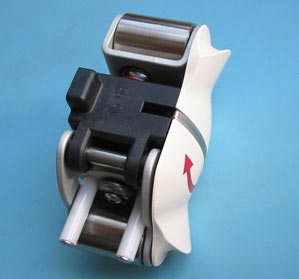
As mentioned above, the specific volume per section is basically set by the hose and division of the pressure bodies, and the definition of the flow rate is controlled by the speed of the rotary movement. As a result, both very small quantities and a virtually constant high flow rate can be achieved.
Rule of thumb: the smaller the hose and/or speed, the lower the flow rate and the higher the pulsation. The larger both are, the higher the flow rate and the lower the pressure fluctuations.
Optimising the rotary body design and rollers
For this reason the rollers used are, convex contoured, or smooth, narrow or wide. This also reduces the frictional heat generated between the hose and the pressure body, as the roller does not rub, but – simplified – moves and rotates with punctual support.
There are metallic rollers with ball or plain bearings, polymer or ceramic rollers with and without separate bearings, conductive variants for use in protected equipment, etc.
Note: polymer can also be electrostatically dissipative, while grease in ball bearings can limit the dissipation.
The design of the outer pressure surface, the so-called “hose bed”, is also very useful. Here too, the disintegration can be minimised.
Typical application area: dialysis machine
One of the main advantages of the peristaltic pump is the separation of the pump mechanics and the liquid to be pumped. The liquid is inside a hose which is compressed and does not touch any external parts of the pump.
This is important in dialysis, for example, to avoid contamination by unclean blood. In each case the hose sets are disposable, with only available per patient, per treatment and are then disposed of. Clearly identifiable, the three pumps lying on top of each other.

Comparison of turned rollers made of POM-C and iglidur A180
The following results of a customer test show that not all polymers are the same.
In terms of wear, friction and temperature development, iglidur A180 stands in direct comparison with a “standard” POM-C (polyacetate / polyoxymethylene copolymer).
In the process, identical bodies of rotation were each equipped with mechanically manufactured roller bodies of both materials. See diagrams:
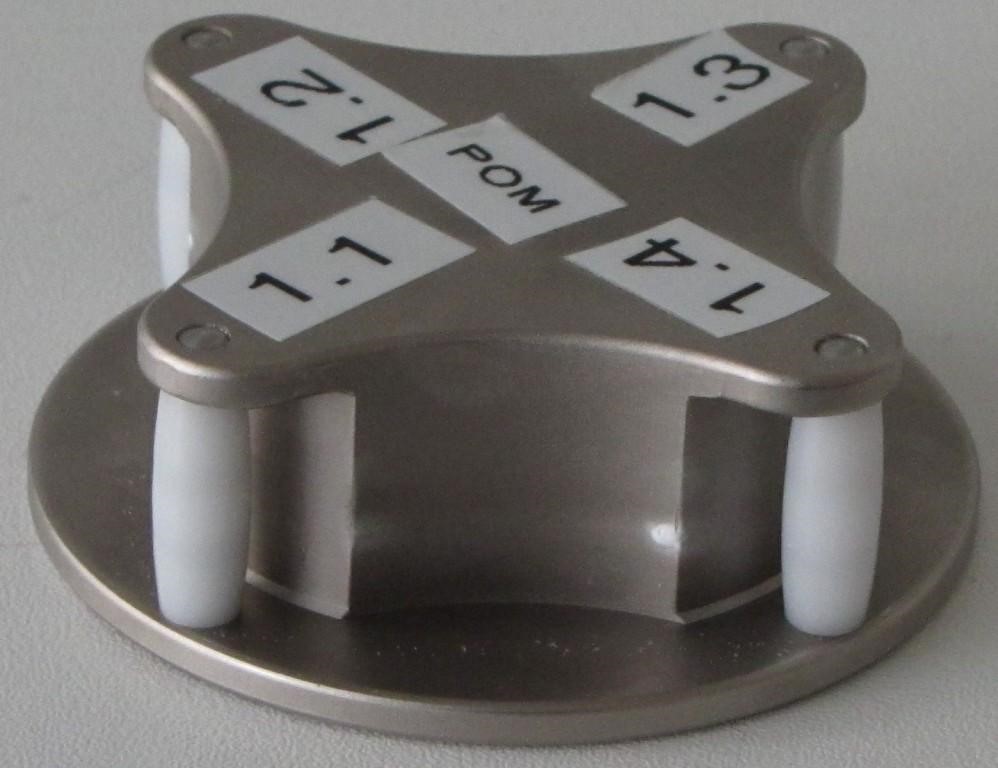
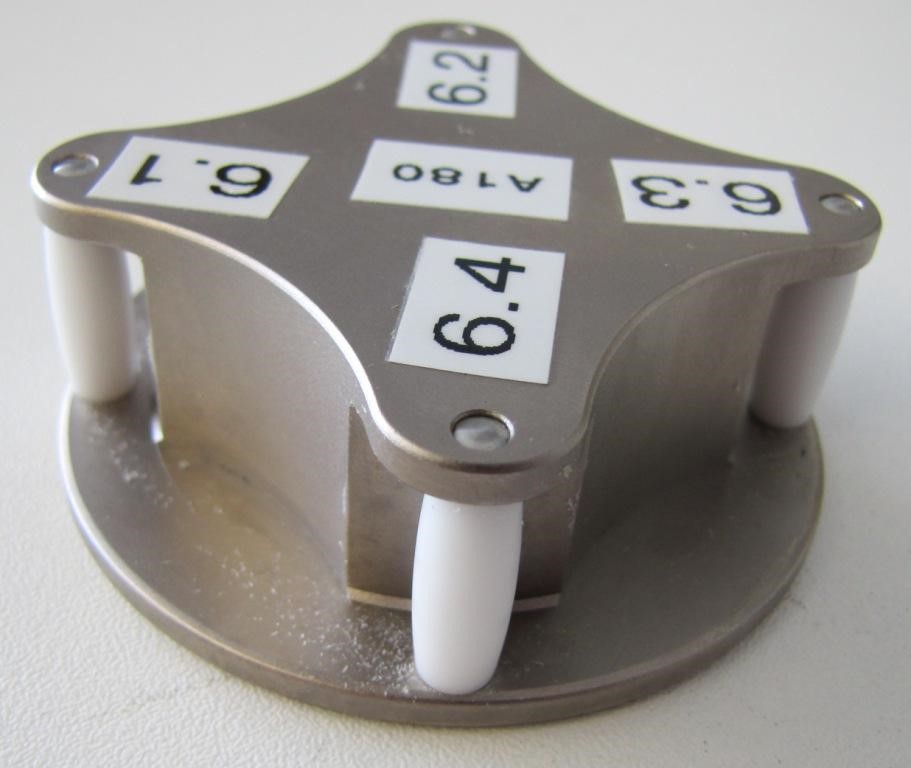
Test results with surprises
The results were partly surprising even for us … In a “seven-week (!)” endurance test, the iglidur A180 showed, contrary to expectations, a higher wear on the inner diameter (compensated by the pressing) and on the length of the roller than the POM material …
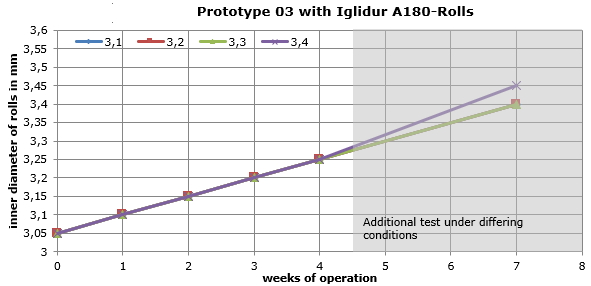
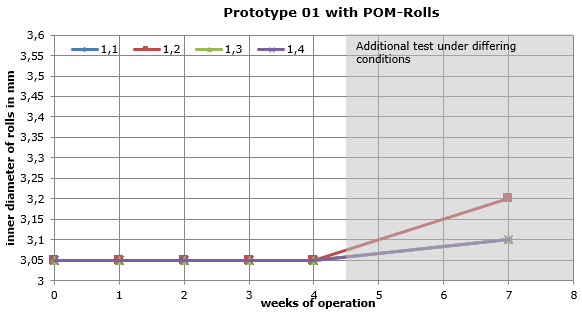
which was initially quite sobering.
The “flow rate” … or: the ball (the roller) is round and the game lasts 90 minutes (or 7 weeks …)
And the game is not over until the referee whistles and the result is final!
Surprising in this case, but as a Cologne-based company, we know what we are talking about as we are all enthusiasts of our local football club “FC Cologne”. 1:0 for iglidur A180!
Much more interesting, both for the customer and for us, was: what happens with the feed rate?
And that’s the surprise …
- POM eventually blocks the movement (motor current) (failure criterion)…. iglidur A180 does not
- The temperature rises with POM up to >60°C (failure criterion) … no significant change observed for iglidur A180
- POM “squeaks”, mostly caused by stick-slip … iglidur A180 sometimes “rattles” slightly due to axial play (neither a failure criterion) but also not nice
Most impressive, however, is the course of the feed rate … The iglidur A180 is almost unimpressed despite abrasion, even cleaning in between does not do much … The system works and is more stable overall!
POM-C rollers break down and block the movement.
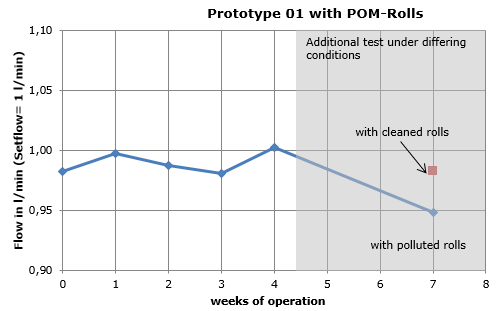

Conclusion of the test:
iglidur A180 has become the standard material for customers.
The incorporated lubrication (embedded lubricants) in the iglidur A180 help very well to keep the coefficient of friction low and constant and reduce heat generation.
The heat in the POM roller probably caused the uncontrollable jamming.
The increased abrasion in A180 is not nice, but has no functional disadvantage.
Potential for improvement:
Some iglidur materials are better than iglidur A180 by a factor X in endurance run on hard anodised aluminium surfaces. Discs (made of other iglidur materials) and rollers made of iglidur A180 could reduce abrasion considerably!
